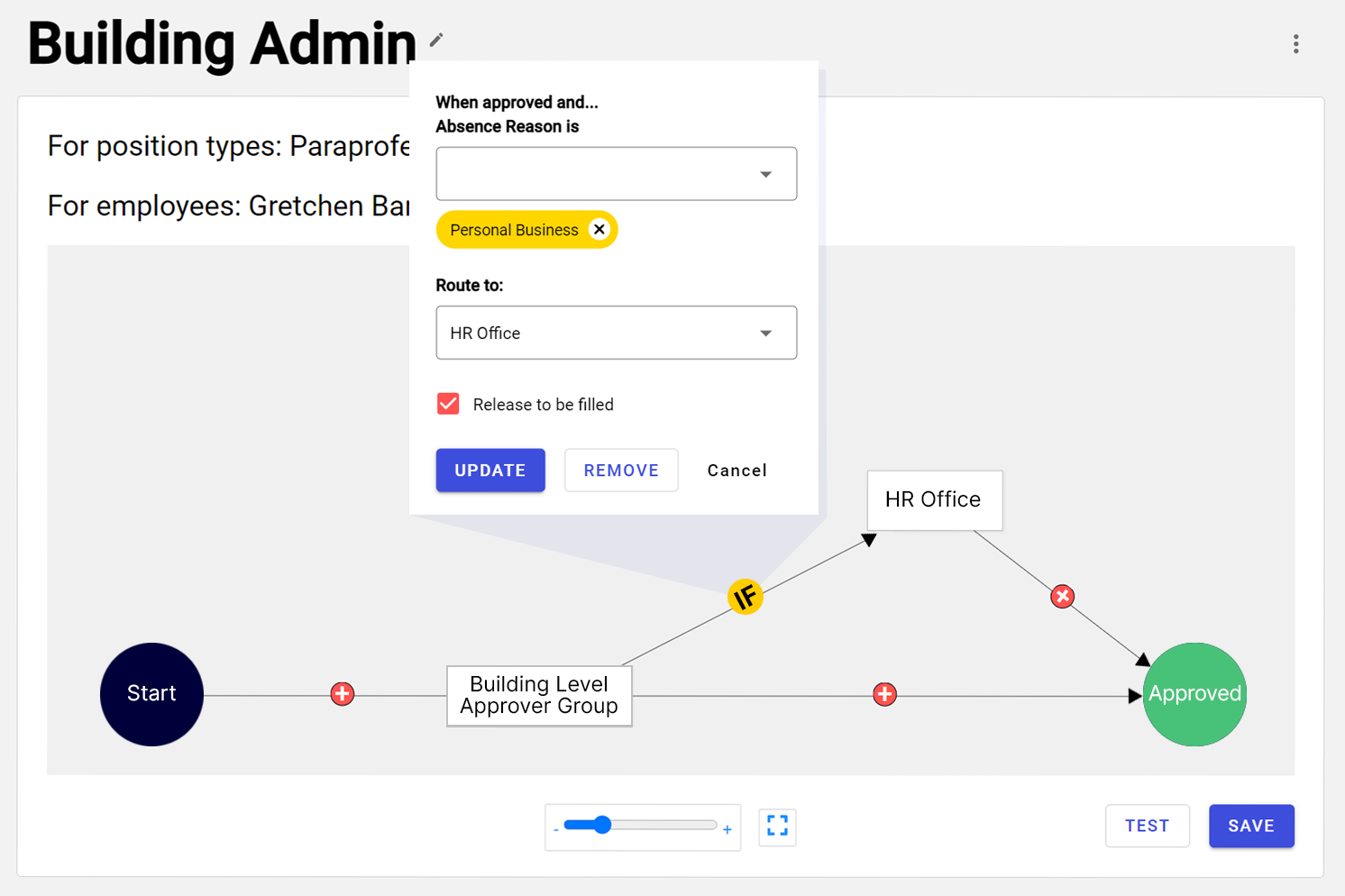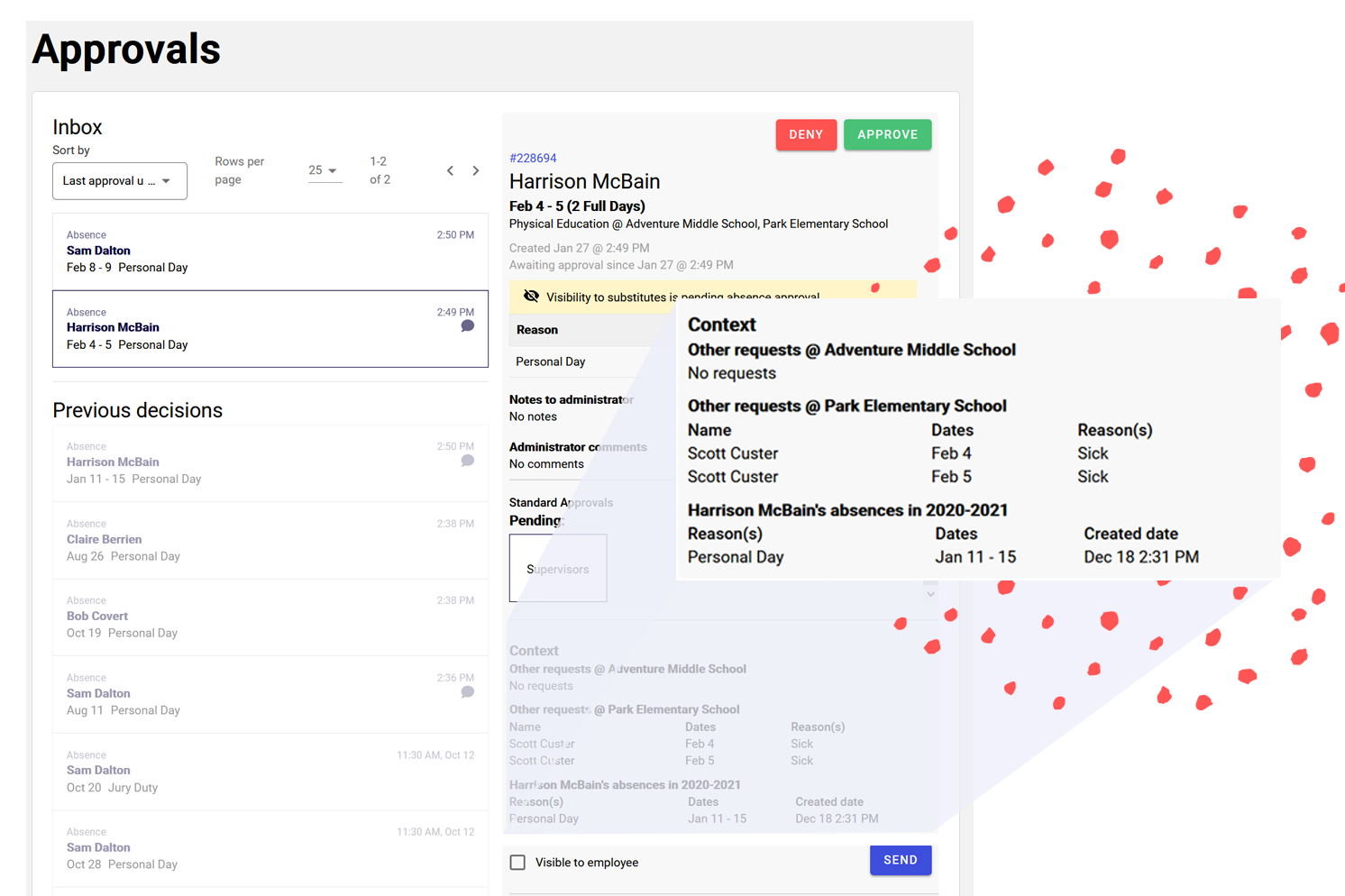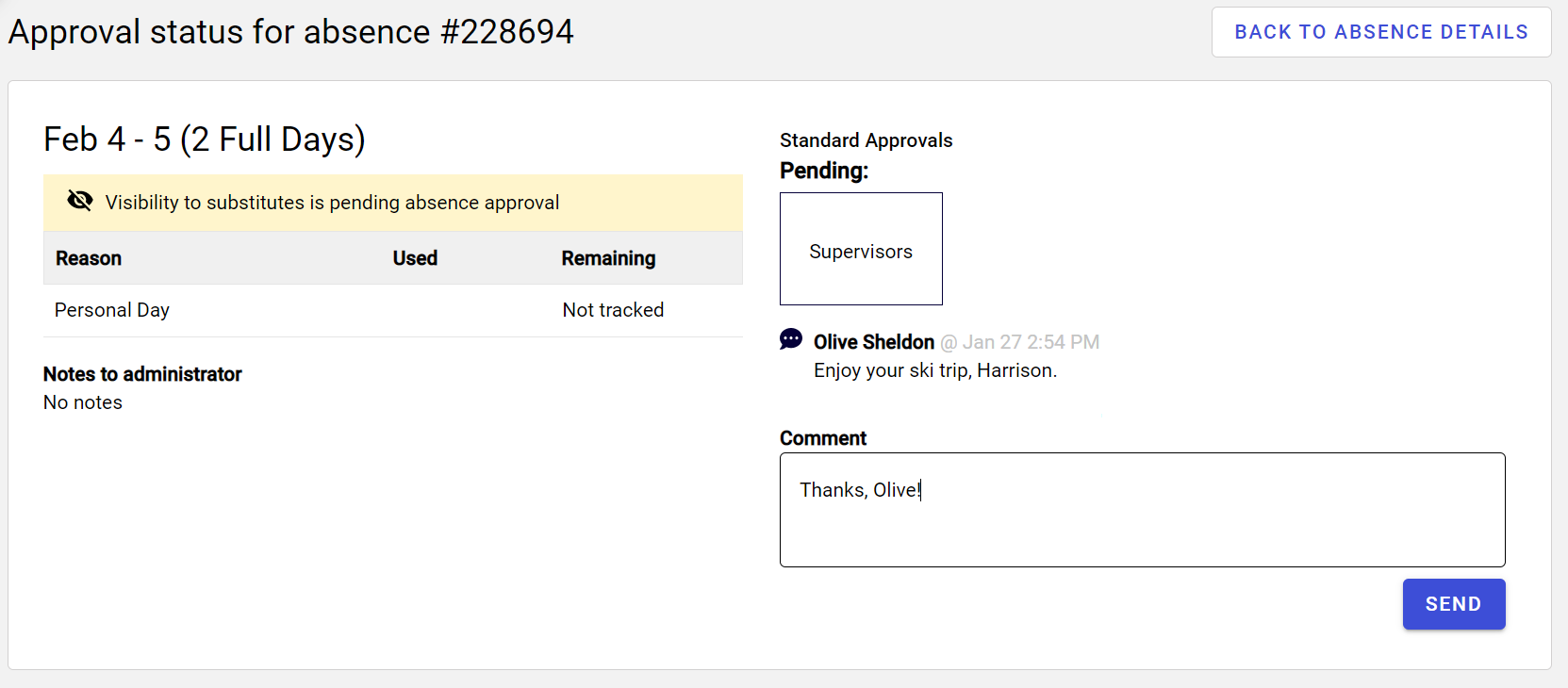- Products
-
About
- Resources
- Contact Us
February 11, 2021 • Insights

When you’re the one responsible for approving who can take their leave and when, being able to see your school’s big picture at a glance is indispensable. In this next installment of the Evolution of Absence Management, we take a bird’s eye view of the second step in a holistic absence management strategy: Absence Review and Approval.
In the early days of sub-calling systems, some people were concerned that employee absences would increase because of the technology. The thinking was that employees would find it “easier” to “call in sick” to a “machine” than to contact their supervisor directly. There may have been some validity to this concern; it’s hard to know.
But as modern software has evolved, it became clear that the best absence approval workflow puts employees in direct contact with their supervisors in essentially real time. An employee requests an absence, and the supervisor responds in a timely fashion. In a well designed system, there is transparency, accountability, and might we even say, courtesy on both sides. It just makes sense. Seems obvious, but not all software has allowed for this simple yet important function.
The best systems also allow supervisors to see a comprehensive overview of the entire staffing picture so that they can make more informed decisions that impact the entire building on any given day. Administrators and supervisors who are responsible for key school functions — whether that is classroom instruction or facilities maintenance — need to evaluate the context of any absence request to ensure that sufficient people resources are available at the right times and places to support student learning. Is the absent position absolutely essential? Is anyone else also going to be gone that day? Is the requested absence date set in stone or could it be flexible? A modern system will naturally compile and display those connections in one place for supervisor evaluation.
And when we’re talking essential, don’t overlook that this applies to both teachers and support services personnel, who statistically could comprise as much as 50% of a district’s staff. While perhaps any single janitor could be absent on any given day, not knowing that their absence conflicts with one you already approved for another could literally be a mess!
The crux of approval functionality is in the setup and maintenance of the people, relationships and workflows in the system. The complex interrelationships between district employees and supervisors change at least once a year. There’s simply no such thing as “set it and forget it” anymore. If your current system is awkward or inadequate, or relies more on an admin’s memory to make it work, it can be a source of constant frustration.
In addition to a straightforward one-to-one supervisor-staff relationship, keep in mind that schools often have multiple types of leave – sick leave, professional development, vacation – that may have different approval workflows and supervisors who approve those absences. The ideal system is flexible enough to reflect and respond quickly to today’s frequently changing K12 relationships.

Red Rover’s built-in drag-and-drop workflow configurator makes setting up approval routing a snap. If/then logic branching allows any number of employee-specific approval sequences.
School supervisory relationships can be complex. Some employees might have more than one boss. Different absence reasons might be approved by different supervisors for the same employee. Certain types of absences might require multiple levels of approval. When an employee’s absence will require hiring a substitute, the approver may be that person whose budget funds will be used to pay the sub.
In addition to approval routing, any modern system needs a comprehensive table of absence reasons that are selectable by classification of employees, with each absence reason configured to require approval, or not — sick leave, for example, does not generally require prior supervisory approval. But if you want to take a Personal Day, or schedule professional development, that will likely require advance arrangement because these discretionary absences can impact the quality of instruction or educational support services at a particular point in time.
Call it the “Weekend Effect”. Employee absences, in any workplace, are typically higher on Fridays and Mondays. By the same token, substitutes are generally harder to find on those days. For these reasons, district policy or individual supervisors may discourage or disapprove discretionary absences on Fridays and Mondays.
Whenever an employee creates an absence for a reason that requires an approval, notifications to approvers are typically generated via email and/or within a mobile app. Historically, each absence approval request would be received and acted on independently. But this is problematic because approvers may want to know if other employees are also planning to be absent at the same time, before approving a new absence.
Recent software improvements provide additional information to help supervisors manage absence approvals. In the Red Rover dashboard for instance, it’s now possible for approvers to see any other absences already scheduled in their work unit at the same time as the current request. This context assists supervisors making approval decisions, and helps to ensure operational effectiveness at all times.

Big-picture Context section in the Red Rover Approvals Dashboard informs building-wide leave decisions at a glance.
Another software development allows for short written messages to be exchanged between employees and supervisors within the absence approval process. A supervisor might have a question about an employee’s request or need additional information to inform an approval decision. Written dialogue can now occur between the parties before a supervisor takes action. Older software does not allow for such helpful communication prior to approval action.
While we may understand that admins may be juggling a thousand things in any given moment, when it gets right down to it, employees really just appreciate getting an answer sooner rather than later. Tools that support quick responses around whether an absence is approved or denied support a more natural, less rigid conversation flow. Notification preferences can be set up to let employees know via email, text, and/or push notifications in a mobile app so that employees can plan their time better, and appreciate you for being responsive. HR pros will also recognize the importance of documenting conversations and agreements around leave decisions.

Logged in admins and employees enter friendly and relevant notes in the Red Rover approval dialogue.
Of course we couldn’t talk about absence approvals without addressing 2020’s elephant in the room. The ongoing pandemic has made absences extremely unpredictable, often longer in duration, and more challenging to coordinate — all the more reason to ensure that your leave management tools operate efficiently and the approvals system is not adding more pressure on already stressed admins.
Absence approval capability has been a natural and important development in the realm of absence management software. This is where the “management” of absences actually happens, with implications for student instruction and district finances. Any modern, effective system should include robust absence approval features that enable designated approvers to make informed decisions and minimize the sometimes inadvertent scheduling conflicts that can happen when things are moving fast and you’re relying on human memory or inadequate, outdated systems.
To find out how Red Rover can smooth out your leave approval workflow, contact us or schedule a demo.
Better yet, if you’re already a Red Rover subscriber, log in and read more about Absence Approval in the Help Center.
Subscribe to get the latest Red Rover news and insights delivered straight to your inbox.